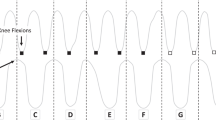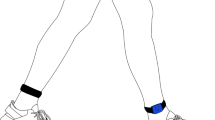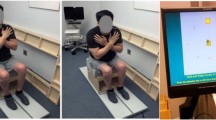Abstract
Study design:
Observational cross-section study.
Objectives:
The objective of our study was to determine if the influence of a community environment would impact on ASIA D spinal cord injured (SCI) gait performance patients. Our main hypothesis is that an outdoor community environment may influence gait speed and endurance on community ambulating patients.
Methods:
Ten-Meter Walking (10MWT) and Six-Minute Walking (6MWT) tests were performed on community ambulating SCI research participants (n=18) in two different environmental conditions: (1) Experimental (indoors Gymnasium) and (2) Natural (community setting). Average gait speed and endurance values were obtained for the two different conditions and analyzed for statistical significance on the nonparametric two-tailed Wilcoxon signed rank test.
Results:
While no difference was observed on the 10MWT we found an improvement on gait performance on the 6 MWT on a community setting.
Conclusions:
Our study showed mixed results on environmental influence on gait speed and endurance on ASIA D patient population. While there is no difference on the 10 MWT, there is an improvement on gait performance on the communitary 6MWT.
Similar content being viewed by others
Introduction
Gait recovery is one of the most relevant objectives to all patients suffering from a spinal cord injury (SCI). Depending on the type of injury and rehabilitation program most patients can recover some degree of gait capability.1, 2, 3 In recent years many studies have focused on the design of gait improvement programs for this patient population.4 Some of these training strategies include partial weight support on a treadmill, driven gait orthosis (Lokomat), ambulatory therapy, functional electrical stimulation (FES) or conventional indoor techniques.5 Two of the most important factors in achieving community ambulation are gait velocity and endurance.6, 7 Gait speed is often measured in a clinic setting but it is unknown whether clinic-measured gait speed can predict community performance on individuals with SCI.8, 9 To the best of our knowledge there are no publications focusing on the impact of the environment on gait performance of SCI patients. In addition, there are no evaluation tools to correlate the validity of indoor values to community ambulating values in this group of patients. The objective of our study was to determine if the external influence of the community environment would impact on ASIA D SCI patient gait performance. Our main hypothesis is that an outdoor community environment may improve gait speed and endurance on community ambulating patients with ASIA D SCI.
Materials and methods
Eighteen community ambulating chronic ASIA D SCI patients were included in the study. All the patients had recovered some degree of gait speed and endurance. The participants were randomly selected from a pool of community ambulating patients who use independent gait as their primary locomotion method and had regular access to the community. Inclusion criteria were: age between 16 and 75 years; more than 6 months from injury; community ambulation according to the 1997 Spinal Cord Medicine Consortium guideline, walking at a speed of at least 0.25 m s−1, no significant cognitive deficit and approved consent for the study. Exclusion criteria were: active cardiac or pulmonary pathologic conditions, Parkinson's disease, peripheral neuropathy in the lower extremities, associated TBI, stroke, alcohol or drug abuse, psychiatric history or any other active clinical conditions. Lesion type, age distribution, time frame from the lesion, use of assistive devices and level of the injury are detailed on Table 1.
Interventions
The Timed Ten-Meter Walking Test (10 MWT) and the Six-Minutes Walking Test (6MWT)10 were performed on the two selected environmental conditions: (1) Experimental (indoors Gymnasium) and (2) Natural (community setting). 10 MWT measures the time (in seconds) that it takes a patients to walk 10 m; it assesses the short-duration walking speed. This test has been used in gait studies of patients with neurological diseases.11 6 MWT measures the distance (in meters) walked within 6 min. This test is useful in assessing cardiovascular exercise capacity in elderly patients with congestive heart failure or chronic lung disease and walking ability in patients with acquired brain injury.10, 11 Validity and reproducibility of these timed tests on patients with SCI has been well documented by van Hedel et al.11
The Experimental environment gymnasium consists of a 53 m straight hallway with a single 90 ° direction change. The natural environment consisted of a public walkway in a local community. Both environmental settings maintained equivalent geographic characteristics (distance, curves, straight lines).
All participants were tested three times for each test, the same day with an interval of 60 min between test runs. Test assignment was randomized to eliminate fatigue bias from test to test. All tests were performed by the same team of three therapists who also supervised patient safety at the outdoor setting. The participants were not informed about the study hypothesis to avoid an individual bias. Individual results were recorded as the average value of three runs for each test for every given patient. The values obtained were analyzed in search of statistical significance (P<0.05). We certify that all applicable institutional and governmental regulations concerning the ethical use of human volunteers were followed during the course of this research.
Results
While no significant difference was found when comparing the mean values of 10 MWT, there was a significant difference for 6 MWT in both environmental settings. (Table 2 and 3).


The nonparametric two-tailed Wilcoxon signed rank test showed no significance when comparing both settings on 10 MWT.

The nonparametric two-tailed Wilcoxon signed rank test showed a slight trend in favor of the community subset when comparing both settings on the 6 MWT.

Discussion
SCI patients can recover some gait capability depending on the type and level of the lesion and the quality of the rehabilitation program. 6 MWT and 10 MWT, developed for the study of gait speed and endurance, have been recently validated.10
It is estimated that 95% of ASIA D patients will be community ambulating at two years from the injury.1, 3, 12 To be considered as a community ambulator, a patient should be able to use his gait as his primary means of mobility (Consortium for Spinal Cord Medicine). Speed and endurance though are crucial to further define community ambulating. Lerner-Frankiel et al.7 reported that a community ambulator should be able to walk on irregular surface at least 300 m. In spite of this definition there is little information regarding gait performance on patients with medullary compromise. On several studies on stroke patients there is a general agreement that a basic community ambulating gait and minimal daily community involvement are poor stimulating factors for the active reinsertion of the patient in the community.8, 13, 14, 15, 16
The International Functionality Classification (ICF) remarks the role of environmental factors on a patient's positive relationship with the community.17, 18 Unfortunately only a few classifications include real life community environments like crossing a street, mall walking and so on.19, 20 Our main hypothesis was that an outdoor community environment could have a better performance on gait speed and endurance on ASIA D patients. Our results point out some of the existing limitations on the current gait performance evaluation methods. While there were no differences when walking 10 m (10MWT) we found that at 6 min (6MWT) participants performed better at the community setting under the same condition. Reasons for this findings may involve multiple causes ranging from boredom factor, perception of danger and individual fitness.8
Conclusions
Our study shows that the community 6MWT is more representative of the maximal capabilities of the patient and that the gym 6MWT may underestimate the real performance. In spite of these differences we propose that 10 MWT is the most feasible test for the evaluation gait speed since 6 MWT can be influenced by the environment. Limitations of our study include a small number of participants and that all our participants had regular access to the community. In addition, only ASIA D patients were included, therefore these results cannot be applied to the whole SCI patient population. Further studies are needed to better design an optimal test to study gait performance on SCI patients.
References
Burns SP, Golding DG, Rolle Jr WA, Graziani V, Ditunno Jr JF . Recovery of ambulation in motor-incomplete tetraplegia. Arch Phys Med Rehabil 1997; 78: 1169–1172.
Crozier KS, Cheng LL, Graziani V, Zorn G, Herbison G, Ditunno Jr JF . Spinal cord injury: prognosis for ambulation based on quadriceps recovery. Paraplegia 1992; 30: 762–767.
Waters RL, Adkins RH, Yakura JS, Sie I . Motor and sensory recovery following incomplete paraplegia. Arch Phys Med Rehabil 1994; 75: 306–311.
Gardner MB, Holden MK, Leikauskas JM, Richard RL . Partial body weight support with treadmill locomotion to improve gait after incomplete spinal cord injury: a single-subject experimental design. Phys Ther 1998; 78: 361–374.
Lapointe R, Lajoie Y, Serresse O, Barbeau H . Functional community ambulation requirements in incomplete spinal cord injured subjects. Spinal Cord 2001; 39: 327–335.
Lord SE, Rochester L . Measurement of community ambulation after stroke: current status and future developments. Stroke 2005; 36: 1457–1461.
Lerner-Frankiel MB, Vargas S, Brown M, Krusel L, Schoneberger W . Functional community ambulation: what are your criteria? Clin Manage 1986; 6: 12–15.
Taylor D, Stretton CM, Mudge S, Garret N . Does clinic-measured gait speed differ from gait speed measured in the community in people with stroke? Clin Rehabil 2006; 20: 438–444.
Perry J, Garrett M, Gronley J, Mulroy S . Classification of walking handicap in the stroke population. Stroke 1995; 26: 982–989.
van Hedel HJ, Wirz M, Dietz V . Assessing walking ability in subjects with spinal cord injury: validity and reliability of 3 walking tests. Arch Phys Med Rehabil 2005; 86: 190–196.
van Hedel HJ, Wirz M, Curt A . Improving walking assessment in subjects with an incomplete spinal cord injury: responsiveness. Spinal Cord 2006; 44: 352–356.
Curt A, Dietz V . Ambulatory capacity in spinal cord injury: significance of somatosensory evoked potentials and ASIA protocol in predicting outcome. Arch Phys Med Rehabil 1997; 78: 39–43.
Lord S, McPherson K, McNaughton H, Rochester L, Weatherall M . Community ambulation after stroke: how important and obtainable is it and what measures appear predictive? Arch Phys Med Rehabil 2004; 85: 234–239.
Bethoux F, Calmels P, Gautheron V . Changes in the quality of life of hemiplegic stroke patients with time. Am J Phys Med Rehabil 1999; 78: 19–23.
Wilkinson PR, Wolfe CD, Warburton FG, Rudd AG, Ross-Russell RW, Beech RR et al. A long-term follow-up of stroke patients. Stroke 1997; 28: 507–512.
Mayo NE, Wood-Dauphinee S, Ahmed S, Gordon C, Higgins J, McEwen S et al. Disablement following stroke. Disabil Rehabil 1999; 21: 258–268.
World Health Organization. International Classification of Functioning, Disability and Health 2001. World Health Organization: Geneva.
Stucki G, Ewert T, Cieza A . Value and application of the ICF in rehabilitation medicine. Disabil Rehabil 2003; 25: 628–634.
Waters RL, Yakura JS, Adkins R, Barnes G . Determinants of gait performance following spinal cord injury. Arch Phys Med and Rehabil 1989; 70: 811–818.
Robinett CS, Vondran MA . Functional ambulation velocity and distance requirements in rural and urban communities. Phys Ther 1988; 68: 1371–1373.
Acknowledgements
Prof Dr Ramòn Leiguarda, MD for his valuable contributions to this publication. FLENI Rehabilitation Institute, Buenos Aires, Argentina.
Author information
Authors and Affiliations
Corresponding author
Rights and permissions
About this article
Cite this article
Olmos, L., Freixes, O., Gatti, M. et al. Comparison of gait performance on different environmental settings for patients with chronic spinal cord injury. Spinal Cord 46, 331–334 (2008). https://doi.org/10.1038/sj.sc.3102132
Received:
Revised:
Accepted:
Published:
Issue Date:
DOI: https://doi.org/10.1038/sj.sc.3102132
Keywords
This article is cited by
-
Berg Balance Scale: inter-rater and intra-rater reliability of the Spanish version with incomplete spinal cord injured subjects
Spinal Cord Series and Cases (2020)
-
Validation of the instrumented evaluation of spatio-temporal gait parameters in patients with motor incomplete spinal cord injury
Spinal Cord (2017)
-
Validity and reliability of the 10-m walk test and the 6-min walk test in spinal cord injury patients
Spinal Cord (2011)



